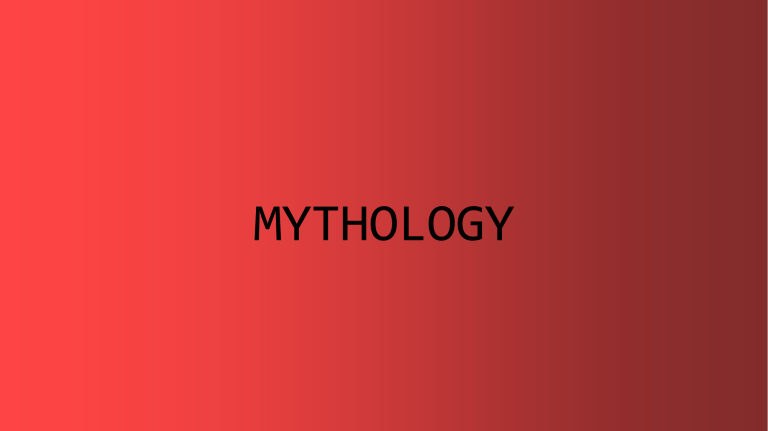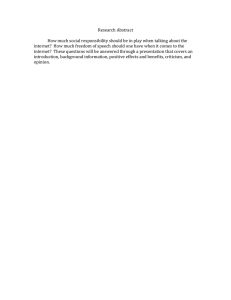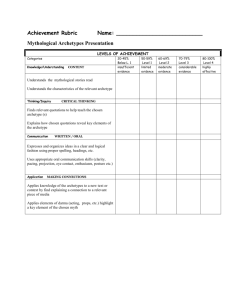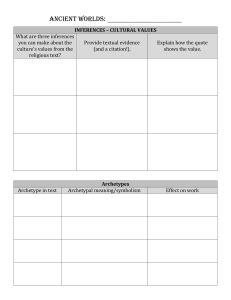
MYTHOLOGY WHAT IS MYTHOLOGY? Mythology (from the Greek mythos for story-of-the-people, and logos for word or speech, so the spoken story of a people) is the study and interpretation of often sacred tales or fables of a culture known as myths or the collection of such stories which deal with various aspects of the human condition: good and evil; the meaning of suffering; human origins; the origin of place-names, animals, cultural values, and traditions; the meaning of life and death; the afterlife; and the gods or a god. MYTHOLOGICAL CRITICISM Mythological criticism is the combination of anthropology, psychology, history, and comparative religion Mythological criticism explores how the imagination uses myths, symbols to different cultures and epochs A central concept in mythological criticism is an archetype that analyses symbols and characters to find a deeper meaning. ARCHETYPE WHAT IS ARCHETYPE? The concept of an archetype /ˈɑːrkɪtaɪp/ appears in areas relating to behavior, historical psychological theory, and literary analysis. An archetype can be: • a statement, pattern of behavior, a prototype, a "first" form or a main model which other statements, patterns of behavior, and objects copy, emulate or "merge" into. • a collectively-inherited unconscious idea, pattern of thought, image, etc., that is universally present, in individual psyches, as in Jungian psychology. • a constantly recurring symbol or motif in literature, painting, or mythology. THE TWELVE ARCHETYPES Twelve archetypes have been proposed for use with branding: Sage, Innocent, Explorer, Ruler, Creator, Caregiver, Magician, Hero, Outlaw, Lover, Jester, and Regular Person. EXAMPLES OF ARCHETYPES FROM DISNEY MOVIES The Loyal Retainer: Tinker Bell The Hunting Band of Companions: The Seven Dwarves -Loyal companions -Willing to face any peril in order to be together The Young Man/Woman from the Provinces: Aurora -Spirited away when young -Raised by strangers -Later returns to her home and heritage The Scapegoat: Wreck-it-Ralph -His "death" atones for the taint visited upon the community -Scapegoat The Outcast: Esmeralda -Banished from a social group for some crime -Becomes a wanderer from place to place -Outcast The Devil Figure: Ursula -Evil incarnate -Offers worldly goods, fame and knowledge -Requires soul as payment WHAT IS ARCHETYPAL CRITICISM? Archetypal literary criticism is a type of critical theory that interprets a text by focusing on recurring myths and archetype (from the Greek archē, "beginning", and typos, "imprint") in the narrative, symbols, images, and character types in literary work. As a form of literary criticism, it dates back to 1934 when Maud Bodkin published Archetypal Patterns in Poetry. Archetypal criticism was at its most popular in the 1940s and 1950s, largely due to the work of Canadian literary critic Northrop Frye. WHO DEVELOPED ARCHETYPAL? Carl Gustav Jung introduced this literary criticism.




